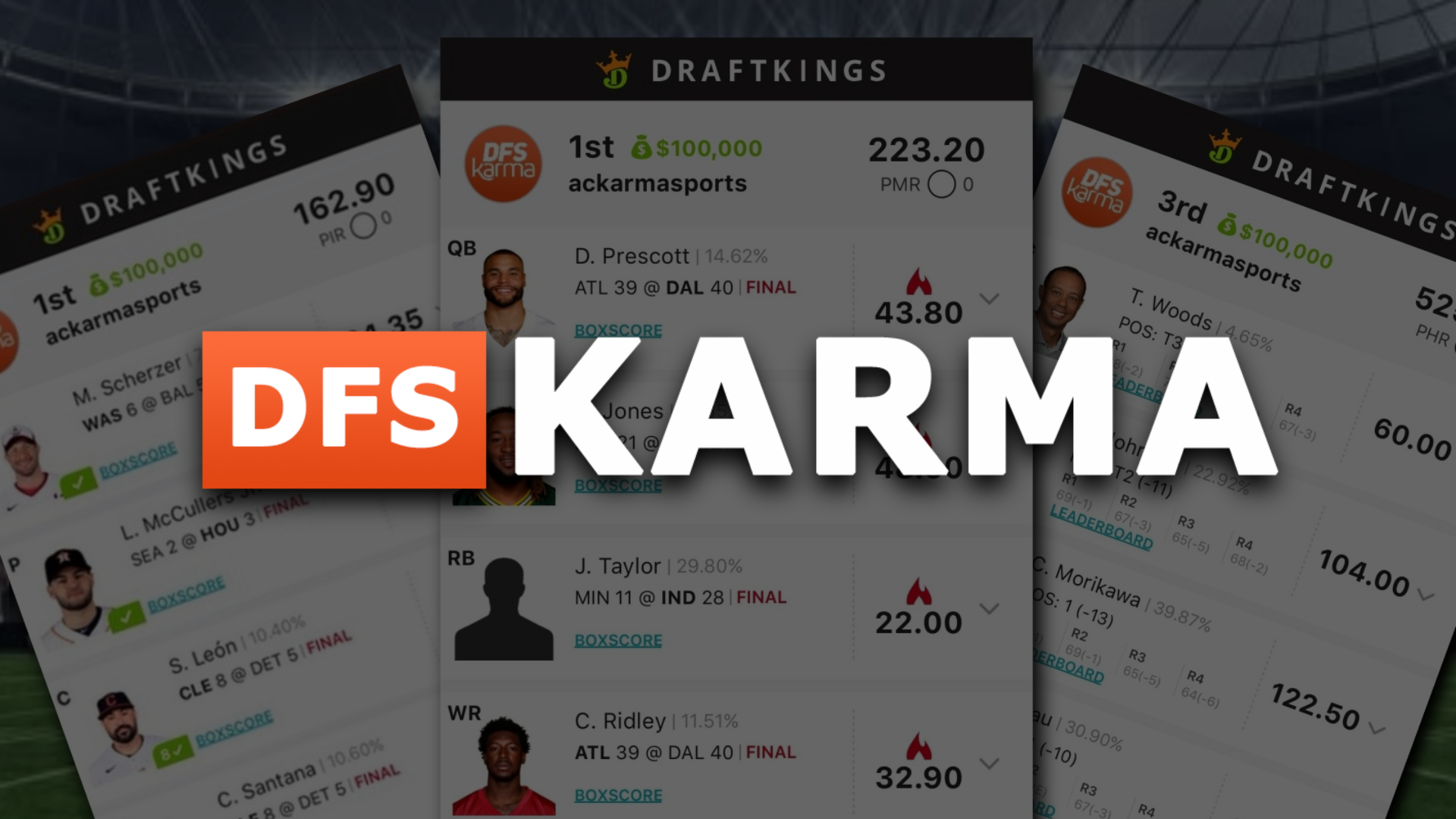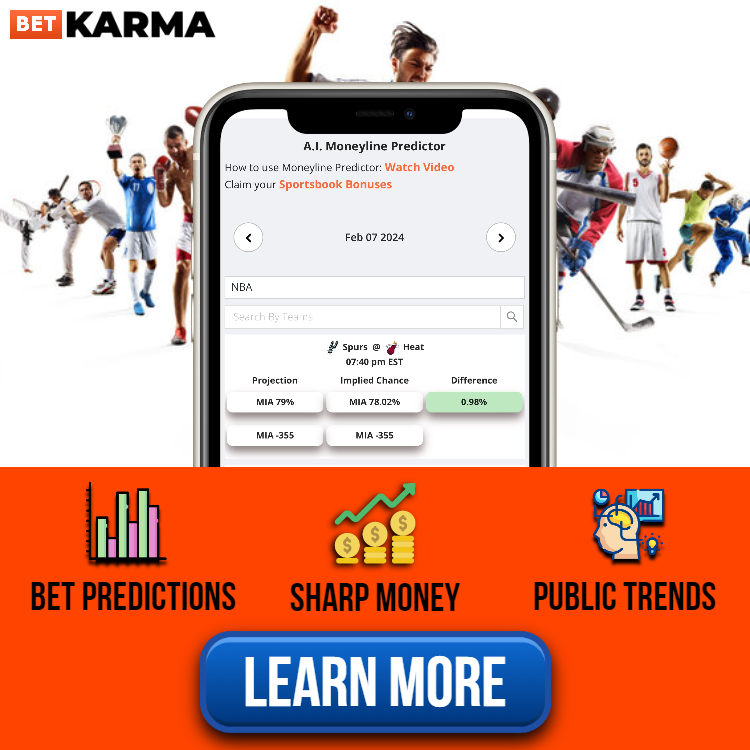
Editor’s Note:
Our newest fantasy partners, Jock MKT, are putting a fresh new twist on fantasy sports giving you a fantasy stock market platform to buy and sell “shares” of players and profit or lose based on their fantasy points scored compared to the rest of the slate. Download their app by clicking HERE and be sure to use promo code KARMA to get a $50 bonus (100% match).
For a full breakdown of how it works, scoring, and all the other basics you’d like to know, click the button below!
Jock MKT MLB Strategies
Importance of the IPO
Jock MKT is essentially broken into two phases – the Initial Player Offering (IPO) and Live Trading.
The IPO opens hours before the slate locks. It then closes slightly before the “normal” lock time of a slate. For example, if the MLB Daily Market is scheduled for 7:05 PM EST, the IPO could initially open at 5:05 PM EST. At that time, you can join and place bids on any listed player. The Daily Markets are free to join, and you do not have to bid on anyone once you joined. The IPO then closes slightly before the slate locks. Once the IPO locks, your “orders” turn into “holdings” and you can either hold them through the slate or trade them live during the games, setting the price you’d accept for each share.
This IPO phase, or the time the market opens prior to locking, is the most important phase on Jock MKT. One of the smallest, yet most obvious [and overlooked], advantages of buying during the IPO is the percentage fee Jock MKT takes. During the IPO, this fee is 1%. It increases to 2% during Live Trading. Although this is a small fee that you likely won’t notice during any specific trades, they add up over the long run.
An MLB season is roughly 185 days. If you play $100 per day, you’d be paying $185 during the IPO as opposed to $370 during Live Trading. Keep bigger totals in mind when considering the difference in fees for the IPO versus Live Trading phases.
MLB is also a different sport for Live Trading than virtually any other sport, although for different reasons. In the MLB, hitters will only see a few opportunities to record fantasy points. They’re likely to record 3-6 at-bat, depending on how the game goes. Other sports, such as football or basketball, give players the opportunity to score fantasy points whenever on the court, making it easy to trade. When a player goes 0-1, their holders are unlikely to trade them at a lesser value than they bought them because a player isn’t likely to hit 1.000 on the game anyway. On the other end, if a player hits a home run in the first inning, they’ll likely be sold for well above what you’re willing to pay because they’re guaranteed those fantasy points. The easiest players to buy during the Live Trading phase are players that are nearing the end of their game and you’re simply holding for a home run or big at-bat. The issue with that is that they’re unlikely to be able to catch the top players at that point.
Although I believe there are sports that are designed more toward the Live Trading phase, MLB is one that I’m looking to attack the IPO significantly more. This is where you can get the best value for your money.
Bidding Strategy
Bidding is interesting on Jock MKT because there is one key strategy that I look to employ, although it may be better suited for contests rather than the market. Essentially, in contests, everyone has $250 to spend. In the market, you have your bankroll. It’s drastically harder, although not impossible, to squeeze others without knowing their bankroll.
In the first hour after the IPO opens, bid up players that you aren’t overly interested in buying on the night but others are. Essentially, you’re looking to lock up other competitors’ money in players you don’t want to buy. This is a strategy I love employing in auction fantasy football drafts to make others spend their capital on something I’m not interested in.
Jock MKT offers projected points for each player on the slate. Find someone toward the top, bid on them, forcing others to overbid, leaving your players with lower prices.
For this example, I’ll use Vlad Guerrero Jr. as the player we don’t want and Mike Yastrzemski as the player we do want. Guerrero will almost always have a higher projection than Yastrzemski, meaning anyone that sorts their players by fantasy point projection will see him before Yastrzemski. Early in the night, you can big Guerrero up however much you feel comfortable someone will outbid you.
By doing this, you accomplish two things. First, you force them to spend more money on a player you don’t want. If you didn’t bid Guerrero up, who knows how cheap they could have gotten him? You’d be shocked how often elite players end up underpriced on any given slate. Second, you forced someone to lock their money in, for the time being, stopping them from bidding up player shares you want to buy. If they have $100 tied up in Guerrero, that’s $100 they can’t tie up in Yastrzemski.
Keep in mind, you should only bid players up to a point where you feel comfortable buying their shares for that night. If not, you could be stuck holding the bag.
Calculate Finishes
The most important aspect of Jock MKT is calculating finishes. This doesn’t mean you should be predicting exactly where players will end up in a slate. That’s impossible. Instead, calculate where they need to finish for how much you’re spending.
For example, there are 72 players in the pool tonight. If you’re confident Marcus Semien will finish in the top 40% of the pool, you can calculate that the highest amount you can spend on his share to break even is $4.50. If he finishes 29th (40%), you’ll win back $4.50 per share, breaking even. This still gives you the upside of 28 spots above that to make money.
You’ll need to factor in upside when calculating finishes, as well. If you’re confident Semien finishes in the top 40% of the slate, you may be willing to spend $5.00 per share on him because of his potential upside. In that situation, he’d need to place in the top 36% to break even. In terms of the positional finishes, you’d make money if he comes in 1-25th. You’d break even if he comes in 26th. You’d lose money if he comes in 27-32nd. The downside is losing $1 per share, while the upside is winning $20 per share. Keep in mind, this example assumes you know Semien will place in the top-40% on the slate.
Regardless of whether you choose to be a risky or safe player in the Market, you’ll benefit from calculating where each player needs to finish based on what you’re willing to pay for them.
Weather/Starting Lineups
Weather and starting lineups are a risky way to get cheap access to players. The pool of 72 players is locked regardless of whether they play or not. If you have 6 players not in the starting lineup and 5 players’ games get postponed, there are only 61 players vying for the top spot on the slate. Keep in mind, you can score negative fantasy points, so just because someone isn’t playing on a slate doesn’t necessarily mean they’re locked to finish in last.
The uncertainty of these players will allow you to find value, though. Let’s start with the weather. If there are games with weather concerns, they generally aren’t as expensive because of the risk of postponement. For example, you wouldn’t pay the same amount for Bo Bichette in a clear game versus one with weather concerns because you’ll only make $1.00 back per share if the game is postponed. It’s risky to attack these players, but if the game plays, you’ll get them at a discount compared to if there weren’t weather concerns.
The same thought process applies to starting lineups. If a player locks at 10 PM EST, but the slate locks at 7:05 and his teams’ starting lineup isn’t out, people will be less inclined to pay more for him. They don’t want to lose their money because someone was benched. This is a risky strategy, although it could pay off in a major way if you’re able to consistently buy players that are undervalued for outside factors.











